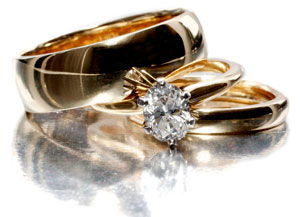 Why not just put jewelry on the Homeowner policy?
Why not just put jewelry on the Homeowner policy?
It's easy, it's quick. But is it in the insured's best interest? Unfortunately, in many cases it's not.
Here's our advice:
Don't put jewelry on a Homeowner policy . . .
- . . . unless the HO carrier provides annual jewelry value updates.
Gems and precious metals can gain or lose value. Styles of jewelry can go in and out of fashion. Factors like politics, weather, and even the mere passage of time can limit the availability of certain gems. All these factors affect the jewelry market, and values may change dramatically. Annual insurance-to-value calculations protect both the insurer and the client from underinsurance or overinsurance. - . . . unless the HO policy names all parties who have an insurable interest in the jewelry.
The Homeowner policy covers the named insured, a resident spouse and resident relatives. But other persons may have an "insurable interest" in jewelry, such as the fiancée who hasn't yet received the engagement ring, the boyfriend/girlfriend living with but not married to the homeowner, etc.
In a standalone jewelry policy, the insurer can add such persons to the policy. The HO policy is more complicated; because of the breadth of coverage under section 1 (property) and section 2 (casualty), the insurer probably would not want to include these persons as named insureds. - . . . because "mysterious disappearance" is not covered on HO policies. Nor is damage, nor is loss of a stone.
These are the three most common kinds of jewelry loss, and none is listed as a named peril on the HO policy.
Unlike most contents covered on an HO policy, jewelry is small, valuable, and it travels. In day-to-day activities, a stone can get chipped, a clasp can become undone. With jewelry on the HO policy, the insured with one of these typical losses would simply be out of luck. - . . . unless you're sure the jewelry is covered by the policy.
HO policies list roughly 19 perils, but theft is the most likely cause for a claim. HO coverage for jewelry is typically limited to $1500 per item or $2500 total. A recent study found that in 2016 the average engagement ring cost $6,163. That means even your client's wedding jewelry would be underinsured. One might as well say that jewelry theft is not covered on the Homeowner policy. This is one reason we say, Wedding rings on HO? NO! - . . . because a jewelry loss may impact Homeowner coverage.
Few consumers—or insurers—realize that 70% of personal property theft losses are jewelry. With jewelry on the HO policy, a jewelry loss would be counted as a claim on the Homeowner policy and reported to CLUE, ISO, etc. This could affect the insured's claim-free status, resulting in higher rates or even non-renewal of Homeowner coverage. Mysterious disappearance of jewelry is a major red flag. Since most insurance companies use automated procedures, the red flag rules. - . . . because Homeowner policies with losses are much harder to place with another carrier.
Many agents already face shrinking sources and rising rates for HO policies, as insurers seek to protect themselves from disasters such as hurricanes, tornadoes, forest fires and earthquakes. Protect your HO market by keeping jewelry off the Homeowner policy.
FOR AGENTS & UNDERWRITERS
Think twice—or six times, as you review the points above—before putting jewelry on the Homeowner policy.
A stand-alone jewelry policy (Personal/Valuable Articles Floater—PAF) addresses the jewelry need without impacting the Homeowner policy.
You can offer your client the best HO policy at the best price, then offer a standalone policy for jewelry—either from the same carrier or, better yet, through a company specializing in personal jewelry coverage.
A standalone policy is especially important for larger schedules, which may exceed the HO carrier's comfort level/capacity or per-item limits. It behooves an agent to cultivate a relationship with a carrier that has no such limitation.
FOR ADJUSTERS
A standalone jewelry policy benefits the adjuster because the separate application usually requires more information specific to the jewelry, as well as better jewelry documentation.
Be sure to ask the underwriter for appraisals, sales receipts, gem reports, photographs, and any other information on file. If such documents are not on file, collect this info from insured, the selling jeweler, and/or appraisers.
©2000-2025, JCRS Inland Marine Solutions, Inc. All Rights Reserved. www.jcrs.com

